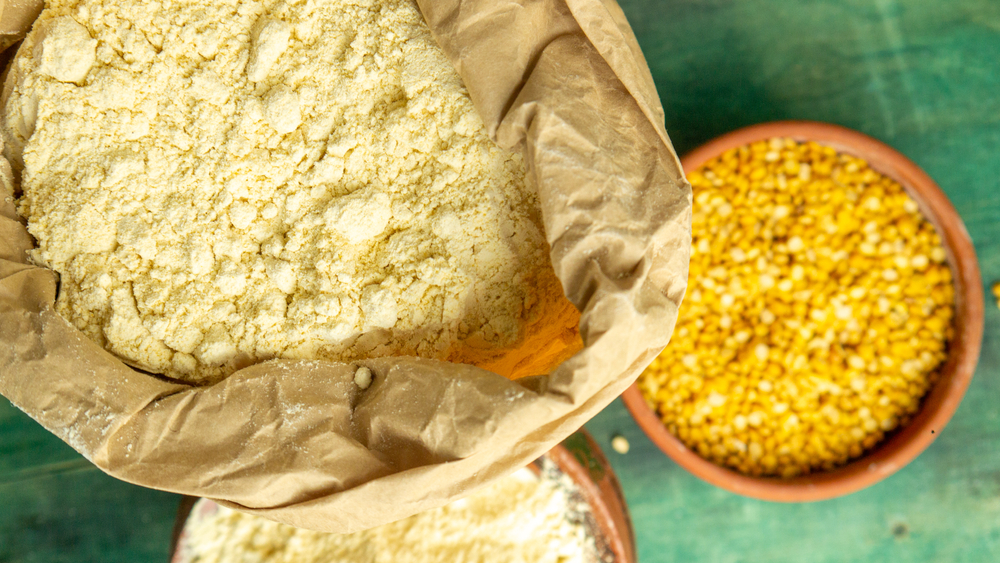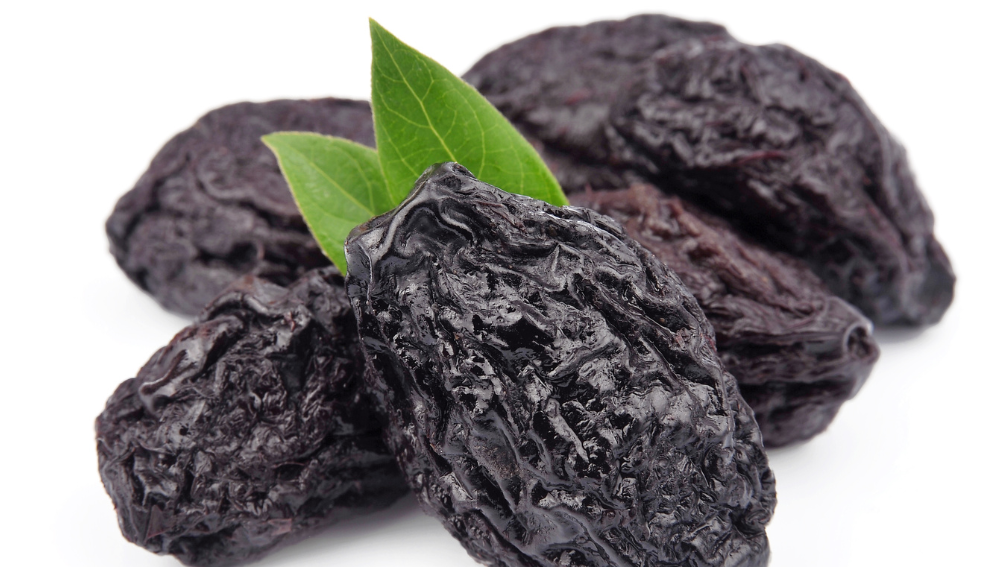Urad dal, also known as black gram or black lentil, is a staple ingredient in many Indian dishes. Known for its earthy flavor and sticky texture, it is often used to make dals, curries, and even desserts.
However, for various reasons such as availability or dietary restrictions, one might need to find a suitable substitute.
There are numerous legumes that can be used as a urad dal substitute, but the key is to find one that closely mimics the taste and texture of the original ingredient.
This article aims to explore various substitutes and their characteristics so that you can make an informed decision when it comes to replacing urad dal in your recipes.
Key Takeaways
- Urad dal has a unique flavor and texture, but several substitutes can serve as its replacement in recipes.
- It’s essential to consider culinary uses and nutritional profiles when choosing an urad dal substitute.
- Availability and dietary preferences may also affect your choice of urad dal substitute.
Understanding Urad Dal

Urad dal, also known as black gram or black lentils, is a staple ingredient in Indian cuisine. It originates from the Vigna mungo plant and is commonly used in a wide variety of Indian dishes.
The versatility and unique properties of urad dal make it an essential component in the Indian kitchen.
When it comes to flavor, urad dal has a slightly earthy and semi-sweet taste that adds depth and richness to the dishes it’s used in. Its texture can range from firm when whole to creamy when cooked and ground into a paste.
The color of these small legumes varies from black when whole (with a white interior), to off-white when split and dehusked.
In Indian cooking, urad dal is primarily used in the preparation of dishes such as dal makhani, idli, dosa, and vada, among many others.
These dishes showcase the versatility of urad dal, as it can be used as a whole lentil, in a split form, or ground into a paste or flour.
Some key nutritional properties of urad dal include high protein content, dietary fiber, and essential minerals like iron, potassium, and magnesium.
The nutritive value of urad dal makes it an essential part of a balanced diet, particularly in vegetarian and vegan cuisine.
In summary, urad dal is a popular and versatile ingredient in Indian cuisine. Its distinctive flavor, texture, and color contribute to a wide variety of dishes, making it a staple in Indian cooking.
Additionally, its nutritional properties make it a valuable component of a healthy diet.
Identification and Aspects of Urad Dal
Urad dal, also known as black gram or Vigna mungo, is a type of lentil commonly used in Indian cuisine. It is recognized by its small, oval shape, and distinctive black color with a white line along the side.
The texture of urad dal is quite dense and has a smooth consistency when cooked.
This pulse is cherished for its creamy texture, which is achieved after it has been soaked and ground into a paste or batter.
Soaking urad dal for a few hours or overnight is an essential step in many Indian recipes. The soaking process softens the lentils and makes them easier to grind, as well as digest.
When ground, urad dal becomes a versatile ingredient with various culinary applications. It is often used to make batters for popular dishes like dosa (a fermented crepe) and idli (a steamed rice cake).
Additionally, whole or split urad dal can be cooked and used in dishes like dal makhani, known for its rich and hearty flavors.
- Shape: Small, oval shape with a white line along the side
- Color: Black
- Consistency: Dense and smooth when cooked
- Texture: Creamy after soaking and grinding
In conclusion, urad dal has a unique combination of characteristics, including its shape, color, consistency and the creamy texture it achieves after being soaked and ground.
These qualities make it a popular and essential ingredient in a variety of traditional Indian dishes.
Nutritional Profile of Urad Dal
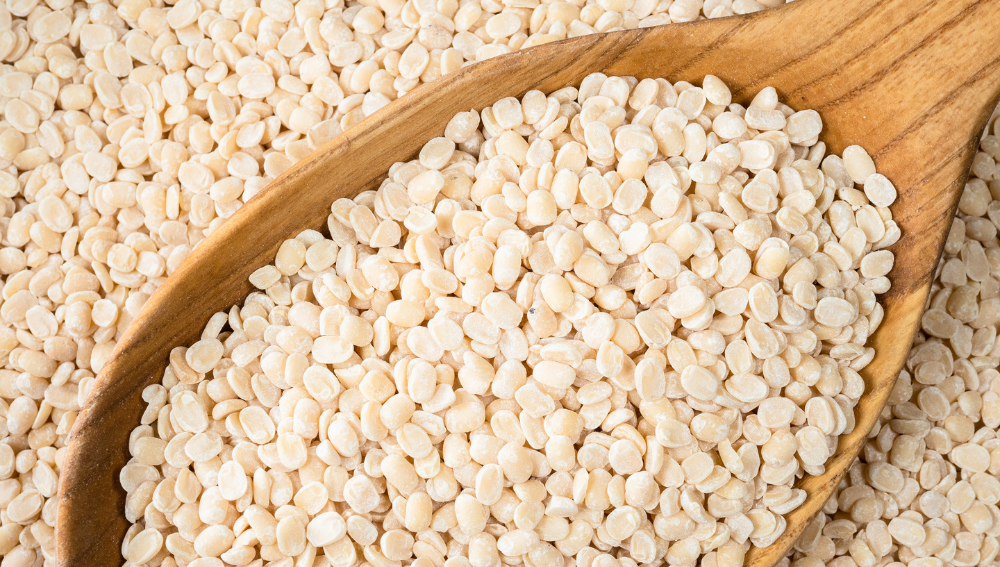
Urad dal, also known as black gram or Vigna mungo, is a nutritious pulse, consumed widely in South Asian cuisine. This versatile legume is rich in essential nutrients and has several health benefits.
In terms of macronutrients, urad dal contains a high amount of protein, with 25 grams per 100 grams serving. This makes it an ideal plant-based protein source for vegetarians and vegans.
Additionally, urad dal is a good source of dietary fiber, providing 9.9 grams per 100 grams serving. This helps in maintaining gut health, improving digestion, and preventing constipation.
Urad dal’s fat content is relatively low, at 1.4 grams per 100 grams serving, making it a heart-healthy choice. Its sugar content is also low, with 1.5 grams per serving, contributing to balanced blood sugar levels.
A 100 grams serving of urad dal provides about 341 calories, making it an energy-dense food suitable for individuals with an active lifestyle or looking to gain weight.
In terms of micronutrients, urad dal is rich in essential minerals. It contains significant levels of iron, providing 7.6 mg per 100 grams serving, which helps in the production of red blood cells and prevents anemia.
It also offers a substantial amount of potassium, with 983 mg per serving, a nutrient that aids in maintaining a healthy nervous system and regulating blood pressure.
Furthermore, urad dal contains magnesium (187 mg per serving) and calcium (132 mg per serving), which contribute to strong bones and teeth and help in muscle function.
The nutritional profile of urad dal, combined with its versatility in cooking, makes it a valuable addition to a balanced diet.
By including this legume in meals, consumers can enjoy the various health benefits it offers, such as enhanced digestion, improved bone health, and balanced blood sugar levels.
Urad dal’s rich nutrition content makes it an ideal substitute for other dals or pulses and can help in maintaining overall well-being.
Culinary Uses of Urad Dal
Urad dal, a versatile legume used in various dishes, is popular in Indian, Pakistani, and Sri Lankan cuisine. It plays a crucial role in preparing a wide array of dishes, offering both delicious flavors and essential nutrients.
One of the most common uses of urad dal is in the preparation of idli, dosa, and vada. These are popular southern Indian breakfast items made by fermenting a mixture of rice and dal, then cooking the batter in specific molds.
The soaking and fermenting process helps break down the proteins and complex carbohydrates in the dal, making it more easily digestible.
Another way to incorporate urad dal into dishes is by using it as a primary ingredient in curries, soups, and stews.
The dal provides a unique texture and flavor when cooked in various liquid bases. Combining urad dal with spices like cumin, coriander, and turmeric creates a delicious base for numerous dishes.
Urad dal is also commonly used for creating crunchy, crisp snack items. The dal is soaked, ground, and combined with spices to make a flavorful dough.
This dough forms the base for deep-fried vadas or sun-dried papads, both of which offer tasty, savory treats.
In addition to being a primary ingredient in many dishes, urad dal can also play a supporting role in salads and stir-fries.
The cooked urad dal can be mixed with vegetables, grains, and other ingredients to create nutritious and filling salads.
For stir-fries, the cooked dal can be quickly sautéed with vegetables and spices to create a healthy, versatile dish that can be enjoyed on its own or as a side to another meal.
A unique aspect of urad dal is its use in alternative flour forms. Urad dal flour, made by grinding the dried dal, can be used as a thickening agent in soups or stews.
In some cases, it may even be combined with other gluten-free flours to create a versatile base for a variety of dishes, including pancakes and bread.
In summary, the culinary uses of urad dal are vast and varied. This versatile legume can be used in recipes ranging from traditional breakfast items to modern salads and stir-fries, making it a valuable ingredient for any home cook or professional chef.
Popular Urad Dal Dishes
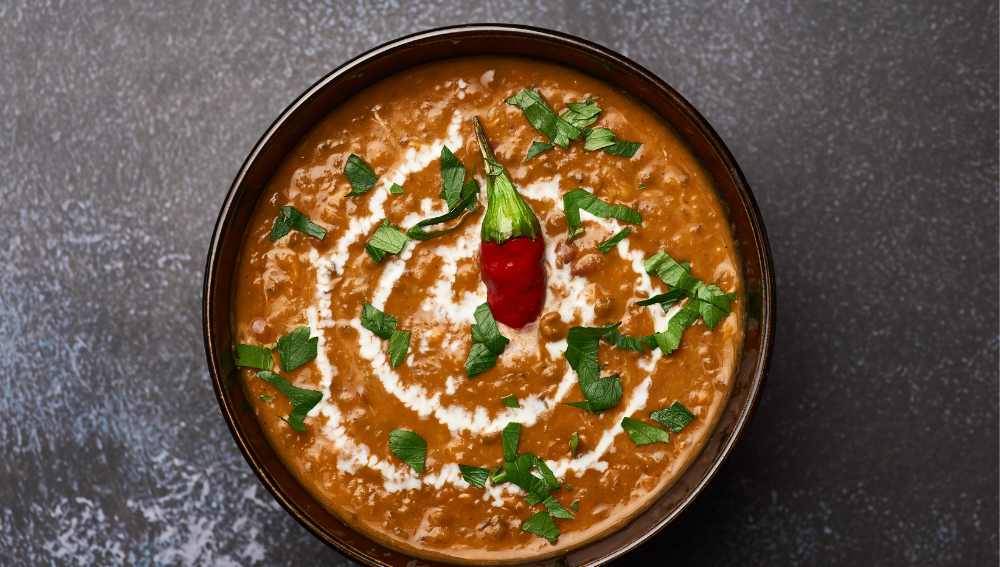
Urad dal, also known as black gram, is a staple ingredient in Indian and South Asian cuisines. It is widely used in various dishes due to its distinctive flavor, rich texture, and numerous health benefits.
Here, we explore some of the most popular urad dal dishes from Indian cuisine.
Dal Makhani is a classic North Indian dish made from urad dal and kidney beans cooked in a rich tomato-based gravy. This dish is slow-cooked, allowing the flavors to blend together and create a creamy, flavorful dish.
The addition of butter and cream adds an unmistakable richness to the dish, making it a popular choice at restaurants and special occasions.
Papad is a thin, crisp, and savory snack made from urad dal flour. These deep-fried or roasted wafers come in various shapes and sizes and are often served as an appetizer or accompaniment to a meal.
They can be plain or flavored with various spices, such as black pepper, cumin, or asafoetida, depending on regional preferences.
Idly is a popular South Indian breakfast dish made by steaming a fermented batter of urad dal and rice. These soft, spongy cakes are often served with coconut chutney, sambar, or other condiments.
The process of fermentation adds a distinct tanginess to idly, making them a delightful start to the day.
While urad dal is primarily found in Indian and South Asian cuisines, its versatility allows for its inclusion in various dishes across different cultures.
Experimenting with urad dal can lead to unique culinary experiences and bring an authentic taste of South Asia to one’s own kitchen.
Substitutes for Urad Dal
Urad dal is a popular legume in Indian cuisine, known for its creamy texture and versatility in dishes. However, there may be occasions when it is unavailable or someone is looking for a suitable substitute.
Several lentils and legumes can be used in place of urad dal, providing similar nutritional benefits and flavors.
Mung beans (moong dal) are a common substitute for urad dal, as both are legumes with a similar texture. Mung beans can be found in whole, split, and dry forms, making them a versatile option. They can be soaked or ground into a flour, replacing urad dal flour in various recipes.
Mung beans are slightly milder in taste, making them a suitable alternative when a more neutral flavor is desired.
Yellow split peas are another excellent substitute for urad dal. They have similar cooking times, making it easy to switch them in a recipe without much adjustment.
Yellow split peas can be incorporated into soups, stews, or purees, providing a creamy and smooth consistency.
Moreover, this legume is widely available and affordable, making it a practical choice.
Red lentils (masoor dal) and toor dal (pigeon peas) are also commonly used as urad dal substitutes. Both lentils have a slightly different taste and texture compared to urad dal but can still achieve a creamy consistency when cooked.
In addition, red lentils cook faster, while toor dal may require a longer setting in an Indian pressure cooker.
Less common options for urad dal substitutes include black beluga lentils, adzuki beans, and dupuy lentils. These lentils have distinct flavors and appearances, but they can still be used as substitutes for urad dal in various recipes.
Black beluga lentils are small, glossy, and black, resembling caviar, while adzuki beans are red and provide a unique sweetness, and dupuy lentils offer a rich and earthy taste.
In conclusion, the best urad dal substitute will depend on personal taste preferences and the desired outcome of the dish.
Some of the mentioned substitutes provide a creamier texture, while others have unique flavors or nutritional benefits.
The key is to experiment with different substitutes to find the one that works best for each specific recipe.
Comparing Urad Dal Substitutes
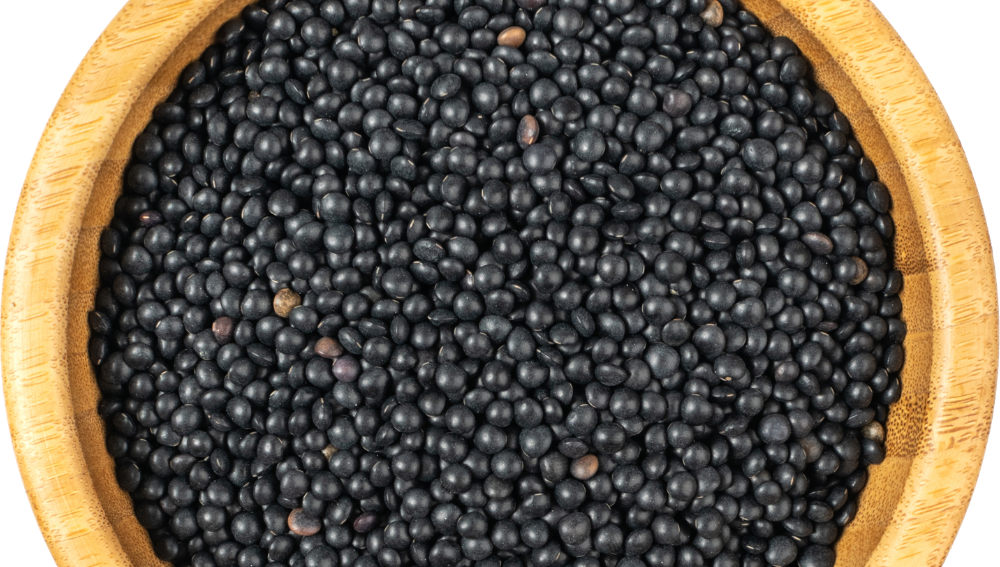
Urad dal, a type of legume, is known for its earthy and nutty flavor. It comes in a variety of forms, like whole, split, and de-husked, impacting both its texture and color.
When comparing urad dal substitutes, it is essential to consider these elements, along with cooking time, seasonings, taste, protein, fiber, nutritional value, and calories.
Here are some commonly suggested alternatives for urad dal:
Black Lentils have a similar earthy taste and dark color, making them a suitable substitute for urad dal. They are also a rich source of protein and fiber but may have a slightly different texture compared to urad dal.
Mung Beans share the legume family and have a mild, earthy flavor. Though their taste is not as pronounced as urad dal, they can be suitable substitutes when combined with appropriate seasonings.
Mung beans are nutritionally dense, offering protein, fiber, vitamins, and minerals.
Red Lentils are another potential substitute for urad dal. They have a mild, earthy, and sweet flavor. However, their texture is softer and color significantly different from urad dal.
Make sure to adjust cooking time and spices to achieve the desired taste profile, and consider the appearance of the final dish.
Yellow Split Peas are similar in size and shape to urad dal, with a mild, savory flavor. Their texture is also comparable to urad dal when cooked.
Yellow split peas are high in protein, fiber, and nutrients, making them a substantial alternative from a nutritional standpoint.
Black Beluga Lentils resemble caviar when cooked and have a rich earthy flavor. They may have a slightly firmer texture than urad dal, though they retain their shape well. Their dark color and distinct taste make them a viable substitute in recipes.
Adzuki Beans are small red beans known for their sweet, nutty taste. Different from urad dal in both color and a slightly sweeter flavor, these beans are still a healthy choice as they are high in protein and fiber, with a low calorie count.
In conclusion, when considering a substitute for urad dal, it is crucial to weigh factors like taste, texture, color, and nutritional value.
Each of the options mentioned above can be suitable alternatives depending on their compatibility with the specific recipe and the desired outcome.
Preparation of Urad Dal Substitutes
When it comes to urad dal substitutes, there are several alternatives that can be used in various recipes. Urad dal, also known as black gram or black lentil, is a staple ingredient in Indian cuisine.
However, if one can’t find this legume or prefer using another option, there are several other legumes that can be used.
Chana dal, also known as split chickpeas or Bengal gram, is a good substitute for urad dal. It is easy to prepare and can be cooked in a similar manner.
To use chana dal, soak it for at least 2-3 hours before cooking. After soaking, drain the water and rinse the dal.
Boil it in a pot with enough water until it becomes soft, which usually takes around 30-40 minutes. Chana dal can be used in various dishes, such as curries, soups, stews, and salads.
Another alternative is mung dal or split mung beans. These beans have a similar texture and taste to urad dal. To prepare mung dal, it should be soaked for about 4 hours, or overnight if possible.
Once soaked, mung dal can be boiled similarly as urad dal until it becomes soft.
Mung dal is a versatile ingredient, that can be used in curries, soups, and salads while offering a similar nutritional value as urad dal.
Toor dal, also known as pigeon peas or yellow split peas, can also be used as a substitute for urad dal. This legume is usually available either split and skinned or whole with skin intact.
Toor dal provides an earthy flavor and is often found in Indian recipes.
Before cooking, soaking toor dal for about 4 hours is recommended. After soaking, boil the dal until it reaches a tender texture, typically taking around 45 minutes.
Toor dal can be utilized in various dishes such as curries, soups, and stews.
When preparing any of these legume substitutes, seasonings play a crucial role in achieving the desired taste. Typical spices used with urad dal include cumin, turmeric, coriander, and garam masala.
However, other seasonings can also be used, depending on the recipe demands and one’s personal preferences.
In summary, chana dal, mung dal, and toor dal are excellent alternatives to urad dal in various recipes. They can be prepared by soaking and boiling the legumes before adding them to dishes like curries, soups, stews, and salads.
Adjust the seasonings as needed to mimic the flavor profile of urad dal while still enjoying the nutritional value these legume substitutes offer.
Where to Buy Urad Dal Substitutes
Mung beans and lentils are the most common substitutes for urad dal, providing a similar texture and taste profile. These substitutes can be easily found in local grocery stores, especially those specializing in Asian or Indian ingredients.
In the UK, Indian grocery stores are a reliable place for sourcing these dal substitutes. These stores typically stock a wide range of legumes, including pigeon peas, toor dal, and masoor dal, all of which can be considered suitable alternatives for urad dal in various recipes.
Additionally, both online and brick-and-mortar health food stores are known to carry a selection of these legumes, particularly lentils and mung beans.
To ensure freshness, consider buying these substitutes in smaller quantities to avoid prolonged storage in your pantry.
In summary, urad dal substitutes such as mung beans, lentils, pigeon peas, toor dal, and masoor dal can be found in local grocery stores, Indian grocery stores, and health food stores, as well as online retailers in the UK.
Gluten-Free Aspects of Urad Dal Substitutes
When looking for urad dal substitutes, it is essential to consider their gluten-free aspects. This ensures that individuals with gluten intolerance or sensitivity can benefit from these alternatives.
Gluten is a protein found in wheat, barley, and rye, which can trigger digestive issues and discomfort in those with gluten-related disorders.
One gluten-free alternative to urad dal flour is beaten rice, also known as poha. Poha is made from flattened rice and is commonly used in Indian cuisine for making dishes like upma.
It is an excellent substitute for urad dal in recipes, as it retains the natural flavor and texture of the dish while being completely gluten-free.
Nuts are another suitable gluten-free substitute for urad dal. They are nutrient-dense and provide a great source of protein and healthy fats.
Ground nuts can be used in place of urad dal flour in various recipes without compromising the dish’s taste or consistency.
Green gram, which is known as mung bean, is also a gluten-free alternative to urad dal. It has a similar texture and taste, making it an ideal substitute in dishes requiring urad dal.
Green gram is highly versatile and can be used in its whole, split, or flour form.
In some cases, rava, also known as semolina, can be used as an alternative to urad dal. Although rava is typically made from wheat and is not inherently gluten-free, gluten-free versions can be found in specialty stores.
It’s important to check the product label to ensure that the rava being used is indeed gluten-free. Rava makes a good urad dal substitute, particularly when making upma, a savory dish that usually contains urad dal.
In summary, the gluten-free aspects of urad dal substitutes, such as beaten rice, nuts, green gram, and gluten-free rava, make them suitable alternatives for individuals with gluten intolerance or sensitivity.
These substitutes retain the original flavor and texture of the dishes while providing a safe and healthy option for those with dietary restrictions.
Frequently Asked Questions
What can be used instead of urad dal in recipes?
Several substitutes can be used in place of urad dal in recipes. Some of the most common alternatives include moong dal (split or whole green gram), toor dal (split or whole pigeon peas), masoor dal (split or whole red lentils), and chana dal (split or whole chickpeas).
These substitutes may alter the taste, texture, and color of the final dish but will provide a similar nutritious profile.
Can red lentils replace urad dal?
Yes, red lentils (masoor dal) can be used as a substitute for urad dal in recipes. Though they have a slightly different taste and texture, they can be a good alternative when urad dal is unavailable.
Keep in mind that the color of the final dish may differ significantly because of the different hue of red lentils.
Is it possible to use green lentils as an alternative to urad dal?
Certainly, green lentils can also be used in place of urad dal. Just like other substitutes, they may cause some variations in taste, texture, and color of the dish.
Green lentils can be slightly earthier and firmer than urad dal. It is advised to pre-soak green lentils before using them in recipes to soften the texture and reduce cooking time.
How can toor dal be used as a substitute for urad dal?
Toor dal, also known as split pigeon peas, makes a good alternative for urad dal in various recipes. Though toor dal has a distinct flavor profile, it can still provide similar mouthfeel and nutrients.
To use toor dal as a substitute, soak it in water for a few hours prior to cooking. This will soften the texture and reduce cooking time.
What’s a good replacement for urad dal flour?
When looking for a replacement for urad dal flour, moong dal flour or chickpea flour (besan) are both suitable options.
While the taste may vary to some extent, these flours provide a desirable consistency and work particularly well for recipes like flatbreads, pancakes, or fritters.
What is the difference between black and white urad dal?
Black urad dal is the whole, unsplit bean with its natural black skin intact, while white urad dal has its black skin removed, revealing the white cotyledon within.
Both black and white urad dal can be used interchangeably in recipes, though the black variety has a slightly stronger flavor and firmer texture. Black urad dal may also require a longer soaking time to achieve a soft consistency.


